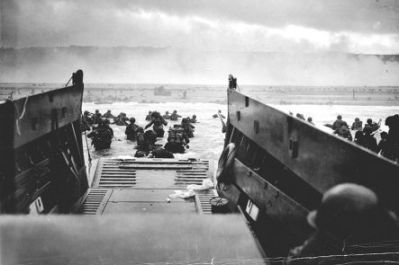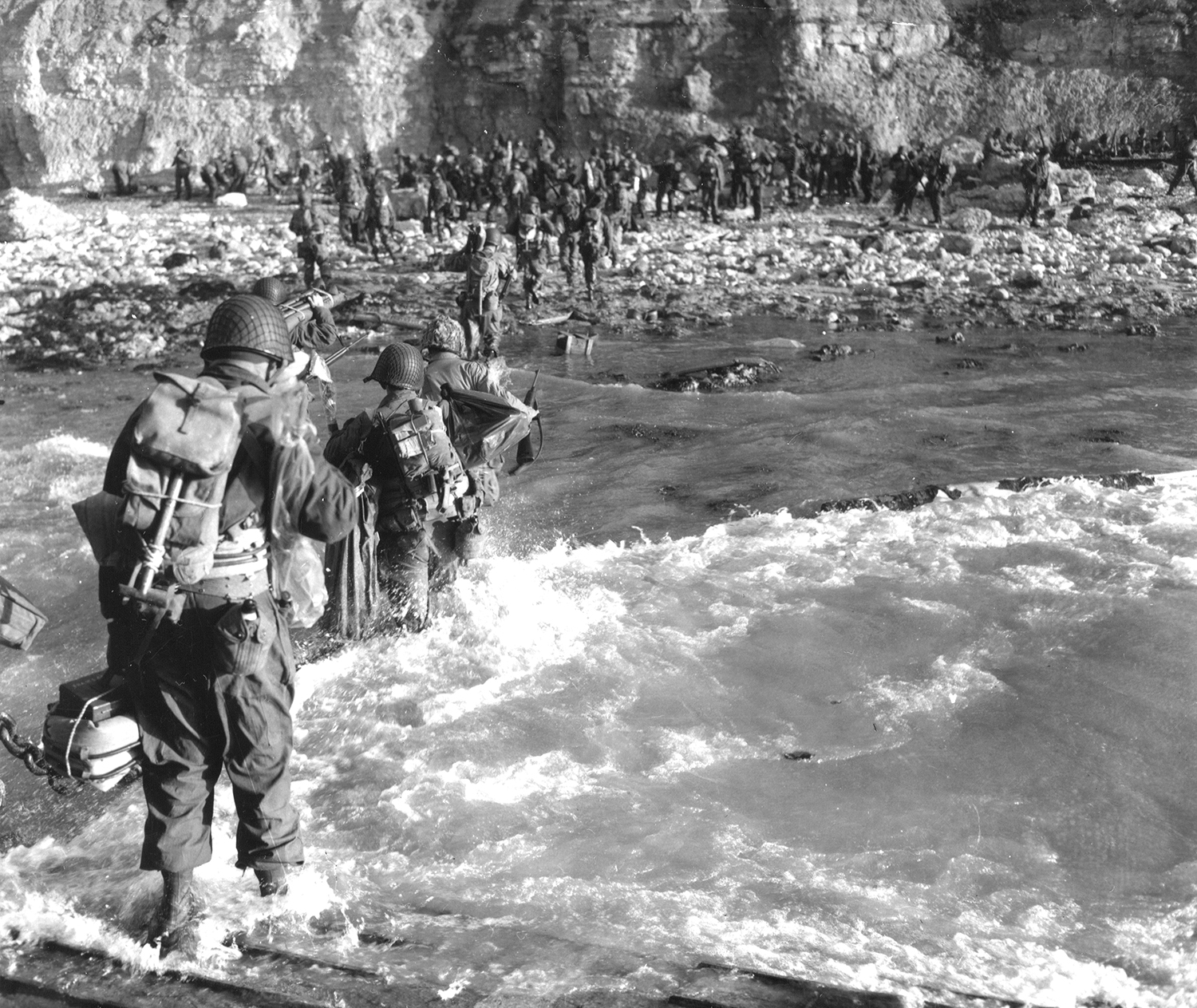

military base Camp Monteith in Kosovo was named in his honor, and Monteith Hall at Virginia Tech (which he was attending when drafted in 1941) was built in 1949. Monteith received a posthumous Medal of Honor and Purple Heart.
He was one month shy of his 27th birthday. Monteith’s unit continued ahead until they were completely surrounded by the enemy. He led an assault over open terrain, leading tanks (that were able to land after the tide came in) through a minefield on foot, eventually capturing an advantageous hill. Pinned down by Erwin Rommel’s forces, Monteith ran to each of the survivors' hiding places under fire to rally the troops. Monteith led his 51 men into the water to storm the beach, but half were shot or drowned before reaching the shore. During the assault on Omaha Beach in Normandy, his unit was left open when the accompanying tanks became bogged in sand and sea water.

Army was a member of the 1st Division (The Big Red One) that fought in Algeria and Italy before transferring to England to prepare for D-Day. But, by opening a western front against the Axis, and then in August pushing it back, it was the beginning of the European war's end.Lieutenant Jimmie W. D-Day was not, despite the common American telling, the entirety of the war decided on a single beachhead. Watch especially how, in July, the Normandy invasion force expanded only slightly as the Axis's southern and eastern fronts collapses. Skip ahead to 5:28 to see the June 6, 1944, invasion - at which point the Allies had taken southern Italy and the Soviet Union was pushing, at enormous costs, into eastern Europe. It's a little rough and the music is hokey, but it's a powerful lens for watching the war unfold. This animated map shows Europe's borders every single day for the entirety of its six-year war.
Ww2 d day full#
How D-Day fit into the full sweep of the war These weeks caused enormous casualties on all sides - including among French civilians - because everyone knew how crucial it was to the outcome of the war, as it proved to be. This shows the Allied invasion and assault from June 6 through August 21, roughly 10 weeks of brutal fighting over a small but fateful corner of northwest France.
Ww2 d day plus#
See the full image here, and both maps plus their reverse sides here. The reverse side of each map had detailed hourly currents, beach gradients, and tidal stages.
Ww2 d day how to#
There's a note to boat navigators on how to guide their way by physical features if the bomber runs leave too much in ruins to recognize. Ditches, man-made barriers such as Czech hedgehogs, and gun encampments are laid out in painstaking detail. Its level of detail is both a stunning accomplishment, as a piece of cartography, and a somewhat haunting evocation of the challenges the Allied forces faced. Known as "the Bigot map" (it's just an arbitrary codename), this two-part map was used by invasion forces to plan and launch the attack. One of the amazing things, looking at this map in retrospect, is how much was expended, and how much at stake, in such a small area of land. The orange arrows show the invasion routes of specific American, British, French, and Canadian groups (Canada's battle flag is the red one with the shield). The darkest shade of pink shows the initial landing zone - you can see the famously named beachheads marked out - with lighter shades showing the immediate advances. You can also see the diversion out near Calais to the northeast. The blue shows the scope of campaign to clear the way for the landing, while the red shows Axis defensive encampments and the green shows Axis strategic targets. We associate Operation Overlord with the landing at Normandy, but the air campaign and bomber offensive were a huge and essential component of its success. Here, to show the extent and scope of the mission, are five maps of D-Day: 1. It was an historic day and a major turning point in World War Two, one being remembered worldwide on Friday's 70th anniversary. On June 6, 1944, the Allied forces launched Operation Overlord, better known as D-Day, in which it sent tens of thousands of troops across the English Channel to invade Normandy and begin the assault to liberate Nazi-occupied Western Europe.


 0 kommentar(er)
0 kommentar(er)
